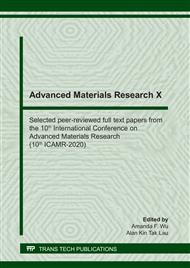p.97
p.102
p.109
p.115
p.120
p.126
p.131
p.142
p.150
Study of Coconut Charcoal Powder and Egg Shell Powder as Partial Replacement to Fine Aggregates and Cement in Load Bearing Concrete Bricks
Abstract:
Waste disposal is one of the issues that plague the society. Philippines is an agricultural country due to its strategic location in the tropics. Because of this nature, the agriculture sector tends to produce a huge amount of waste that if not disposed properly could pose a threat to the society and to the environment. With the advancement of technology, it has been a challenge for researchers to improve the quality of construction materials that is used in the industry. Studies have been performed on the possibilities of incorporating agricultural wastes to various construction materials as a form of waste diversion. In order to address the problem with agricultural wastes as well as to improve the property of construction materials, a study on coconut waste and eggshell waste was conducted as a constituent in concrete brick production. In this study, the density, compressive strength as well as the water absorption of concrete bricks with coconut charcoal powder (CCP) and eggshell powder (ESP) as replacement for fine aggregates and cement was conducted. Different mix ratios (0%, 2.5%, 5%, 10% CCP with a constant value of 5% ESP in each mix ratio) were carried out and the results were compared to a control sample. From the results of the density test, the concrete bricks with 5% CCP and 5% ESP was the lightest at a density of 1678.184 kg/m3, it also showed the least water absorption at 8.58% and exhibited the highest compressive strength at 17.5 MPa.
Info:
Periodical:
Pages:
120-125
Citation:
Online since:
July 2020
Keywords:
Price:
Сopyright:
© 2020 Trans Tech Publications Ltd. All Rights Reserved
Share:
Citation:


